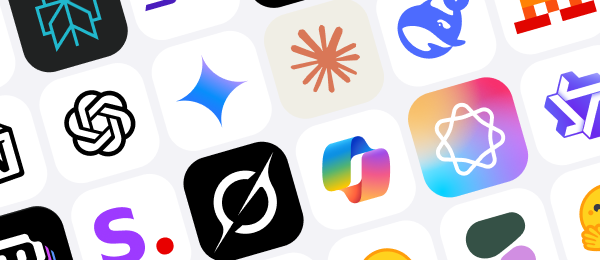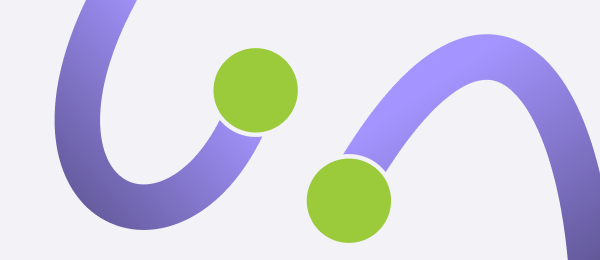People Analytics – A great process for your business needs!
Years back, hearing the word people analytics would create confusion. Now, it has become the center of the HR department. Collecting various data about the organization and its employees can be very frustrating as well as tiring. For making any decision, you used to have to go through all the data manually. But now, people analytics is here to make your work convenient and hassle-free. Blending the unanalyzed data with the people analytics software gives a new perspective to the business.
Data and humans are the main factors for any company. Through people analytics, one can gather data insights on the essential resources of the company. The curriculum, in its entirety, gives foundational knowledge about the employees of the company.
This modern technology has brought advancements to every organization. Decision-making in the organization about different candidates has now become much easier. It is now data-driven and analytical. To understand the exact meaning of the term “people analytics,” read the following blog carefully.
What is the meaning of people analytics?
People Analytics, also known as HR Analytics, is the practice of accumulating organizational and employee data. It enhances the company’s work to produce a better outcome. It involves collecting, analyzing, and reporting the data. In simple words, it is the use of data analysis on an employee to evaluate their effectiveness.
It provides a macro view of the employees’ effect on an organization so that decisions can be made effortlessly. You can apply the goal-focused or data-driven method to study people’s strengths, functions, and processes through people analytics. Strategic, more innovative, and talent-based decisions will not be as difficult.
Types of people analytics
Are you willing to implement the people analytics method? The first step is understanding the different types of people analytics and finding the one that best suits your business. Below, we discuss each type to help you make an informed decision.
• Descriptive analytics
This is one of the most common types of people analytics. Data collected through this analysis is used to enlighten you about the historical events in the business. Additionally, you will also get to examine the current events. By implementing this analysis, you will get a complete understanding of the business.
• Smarter hiring
Virtual hiring is also a process of analyzing people to check their impact on the company. You can use jobma interview management system to eliminate extra effort while recruiting candidates. One of the software that you can use to hire a candidate is Jobma. With this tool, you can check out the pre-recorded interview later on to evaluate compatibility.
• Predictive analytics
When you use the predictive analytics technique, you can use the data to predict what will happen in the future. Using both predictive and descriptive analytics at once is the most beneficial option thing.

How are companies implementing people analytics?
There is a significant trend today, which is turning companies to people analytics. This trend helps the company to generate a new workforce for better outcomes. Although this trend is still unknown to many companies, the larger big-name companies have already adopted this.
These companies have to follow a certain process to implement this approach to their business. This process is predictive and intuitive. The people analytics process involves the following steps.
Step 1 – Look for the needed data.
Find out the areas that need direct monitoring to improve business efficiency. This requires you to dig into the data that is relevant to your company. Data mining is one of the important steps here. Knowing what to focus on will lead to tangible business success.
Step 2 – Explore and apply.
With a whole lot of choices, it is imperative to make the right decision. Look for the people analytics tool that enriches your business the most. Explore different options, and pick out the best one. These tools provide multiple offerings like data visualization, data transformation, and data mining techniques. Choose the tool that works best for your organization.
Step 3 – Get ready for implementation.
Once you learn which data is relevant, what your end goal is, and what your available options are, you need to design a plan. Having a well-designed plan will lead to a better understanding of certain changes. Applying organizational capabilities and leadership development will help in fine-tuning the action plan.
Step 4 – Contact the legal compliance.
Including the legal team members will ensure the elimination of any legal challenges. Ask them to go through the data sourcing processes and techniques for your help. After collecting raw data, all the results need the approval of the legal team. However, we have privacy laws and data protection in our system, but it’s always good to be double-sure.
Step 5 – Keep the process simple.
Regardless of the project’s complexity, your processes need to be lean and uncomplicated. The basic data interpretation and analysis process will permit easy updating, application, and readability. Create a clear outline to avoid unnecessary complications.
Step 6 – Design a realistic HR business strategy
Try to go for the fact-based strategy to align the business to talent with no unneeded effort. Having clear ROI and KPIs expectations will make sure that the impact on business is positive and comprises transparency. Back it with an effective plan and relevant data for a winning strategy.
Step 7 – Get the right HR tech tool.
HR Technology is an inevitable part of today’s world, and people’s analytic process is no such exception. There are many real-time tools that one can easily access. These tools comprise real-time intelligence and agility that will make you stand out among other competitors.
With all these simple steps, applying people analytics is no big deal.
Perks of using people analytics
Each organization should incorporate people analytics into its system because of its beneficial outcomes and incredible effectiveness. Using people analytics will not only give you a competitive advantage but has several other advantages as well. Let’s take a look at some of these advantages.
• Enhance performance
For using people analytics, you have to go through some trends and a dashboard. These trends highlight the specific problem, including workplace risk assessments, workload, collaboration, etc. It can even double the performance and output if you implement it correctly.
• Save time
Searching, interviewing, hiring, and training employees is a time-consuming process. Therefore, using people analytics can be very beneficial to you. It will allow you to focus on programs and people that will be most advantageous. Focus on the actions that can better the performance of the organization.
• Understanding of both current and future skills
By using people analytics, you can understand the current and future skill potential of the candidate as per the business requirement. In that way, you can seamlessly design programs according to the company’s future needs.
• Finding cost savings
People analytics permits you to realize which candidates may be thinking of quitting their jobs. It has 95% accuracy. In that way, HR can work on these areas to reduce the number of employees quitting.
• Strengthen decision making
Through people analytics, you will collect facts that will help you to empower your decision-making process. Moreover, it will help you to be more subjective in your approach.
Points to remember regarding people analytics
Once you decide to use people analytics for your organization, you need to keep certain points in your mind.
1. Check whether your company is ready or not.
People analytics can significantly impact your company, but only if you are ready to use it. If your company is not prepared to change, then there is no point in investing in something. People analytics is not about artificial intelligence, tools, statistics, and technology. It is more about the change your company is willing to make. So always ensure that your company is ready before you plan to start something.
2. Look for companion data champions.
Some leadership teams may require persuasion to go for people analytics. As you proceed with the data-driven culture, it will include a full change in the management plan and an organizational shift. Identify data champions within your company, and get ready to build your business case.
3. Get your questions ready.
People analytics is nothing without relevant and strategic questions. However, you will notice the difference in your company without these questions as well, but the impact will not be the same. Have a look at the bigger picture, and think about the company’s future while writing these questions. While implementing people analytics, you have to go beyond the common HR questions.
What is the future of people analytics?
Implementing people analytics in your organization will create a lasting effect on the performance of the company. Companies have now started realizing the importance of data-driven decisions. Here are some predictions by the experts about the future of people analytics.
- It is very important to create a balance between the human role and the technology in the company. With the advancement of people analytics, HRs will face challenges in keeping that balance.
- In the future, the organizations will be supercharged, and they will be highly driven to real-time decision-making.
- Through these analytics, HR can easily find and nurture the future leadership of the organization.
- HR professionals will even be able to predict which employees are planning to quit. They can easily find the future employees of the company.
Wrapping it up
People analytics is a great step for an organization to work for a boost in the company’s performance and outcome. Once implemented, the HR professionals will be enlightened with the company’s past, present, and future information. Afterward, they can prepare for tasks accordingly.




